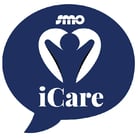.jpg)
.jpg?width=4256&name=Tips%20on%20Preventing%20Slip%20and%20Fall%20Accidents%20(1).jpg)
Each year more than one million slip and fall accidents occur in the United States. The Occupational Safety and Health Administration (OSHA) reports that approximately 15 percent of accidental deaths are directly or indirectly related to these accidents. Slip and fall accidents continue to be a significant source of expense for employers. The National Floor Safety Institute (NFSI) has estimated that the average award to a slip and fall victim ranges from $60,000 to $100,000. Preventing slip and fall accidents is an imperative for any facility manger. A few tips.
Good Housekeeping
Preventing slip and fall accidents begins with good housekeeping practices. Some of the basics would include:
- Immediate clean-up of spills: Lingering spills are a common cause of slips and falls. All liquid spills should be cleaned as quickly as possible and signs should be posted to advise that the floor may still be damp and slippery.
- Unobstructed walkways: Keep your internal and external walkways clear of debris and obstructions. Establish a routine for inspecting areas of your facility to ensure that pathways are clear and hazard-free.
- Keeping carpeting and floor mats flat: Use tacking where necessary to control uneven carpet or matting surfaces.
- Proper covering of cabling: Make sure that any floor-running cabling is properly covered with a durable, high visibility, covering.
Proper Lighting
Many slip and fall accidents are the result of inadequate lighting. Making sure that all areas within your facility are properly illuminated is a cost-effective way of preventing slip and fall accidents. Replace all blown bulbs as quickly as possible and use wattage levels that provide sufficient illumination of all flooring surfaces. Too bright is always better than too dim.
Proper Footwear and Care
Footwear is an often overlooked component in preventing slip and fall accidents. Different facility types require different types of shoe soles. Achieving the proper level of traction is critical. When that traction becomes degraded the shoes should be replaced.
Every year many slip and fall accidents are attributed to workers tripping over untied shoelaces. Few preventative measures are as simple as tying your shoes!
Education
Education of employees should be a standard element within any slip and fall prevention program. Educate all facility occupants on the preventative measures you are taking and give them appropriate instruction on how they can contribute to a safer walking environment. People that are observant of their surroundings, and that adhere to proper behavior, ---no running, no horseplay, etc. --- are less likely to suffer a slip and fall.
Preventing slip and fall accidents within your facility protects the safety of your occupants while also helping minimize your organization's financial risk and exposure. A true win-win for everyone.



.jpg?width=220&height=135&name=Blog%20Listing%20Image%20(13).jpg)
-1.jpg?width=220&height=135&name=Blog%20Listing%20Image%20(5)-1.jpg)

.png?width=180&height=138&name=Untitled%20design%20(25).png)


